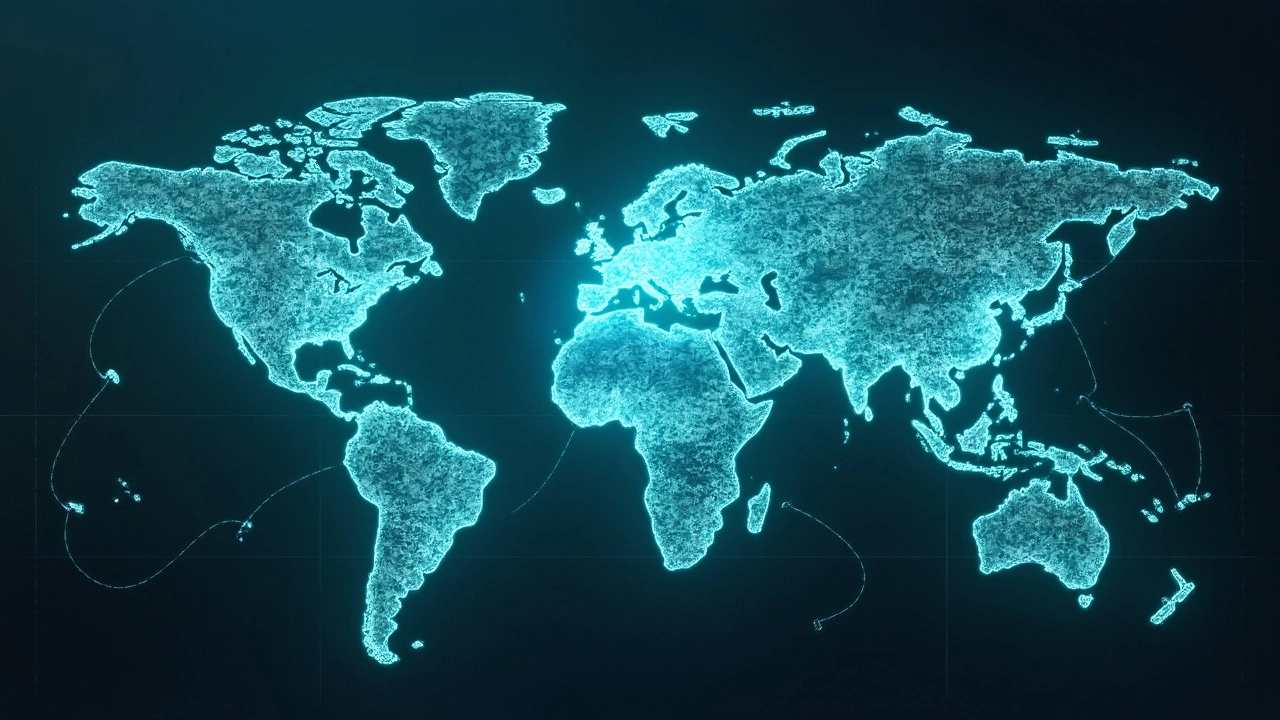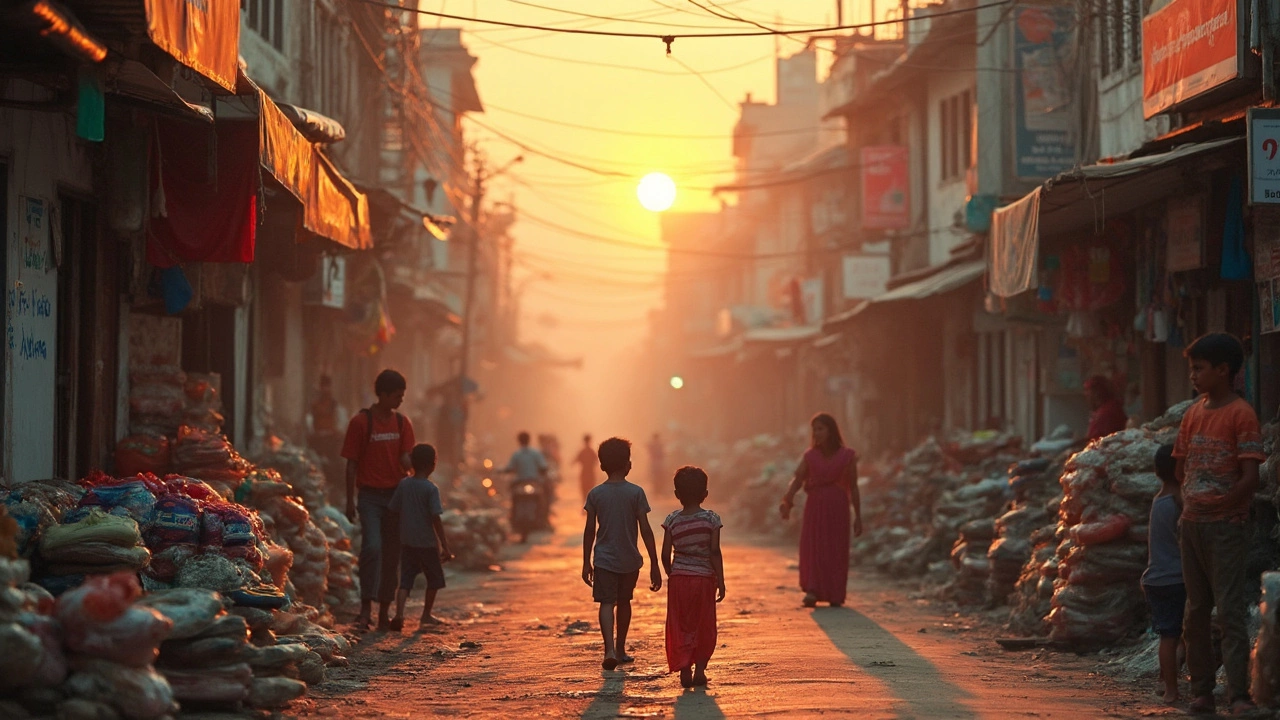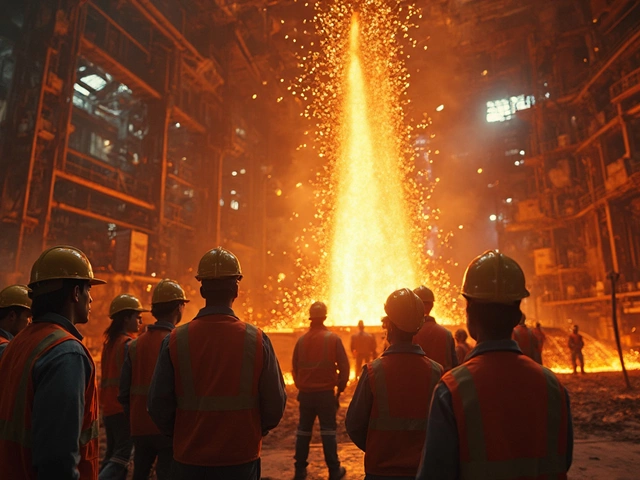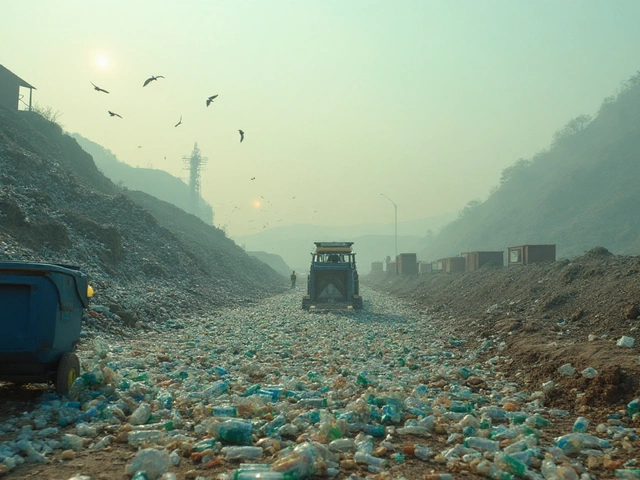If you've ever wondered who makes the world's plastics, fertilizers, cleaning agents, or even those colorful coatings on your favorite trainers, you're not alone. Almost everything around us has a little bit of chemistry tucked inside, quietly engineered by giants in the chemical industry. But topping the list, with revenues that outpace entire countries' GDPs, sits a name you’ve probably spotted on paint cans or science news: BASF. This isn't just some faceless corporation—BASF has its hands in so much of what keeps our world moving, from food production to smartphones and the medicines you might rely on.
The Scale of BASF: More Than Just Numbers
It’s one thing to say BASF is the world’s largest chemical manufacturer, but those words hardly scratch the surface. This German-based powerhouse, founded way back in 1865, pulls in over €68 billion a year. That figure didn’t just show up overnight. Over a century of breakthroughs and a smart appetite for taking risks pushed BASF into the very heart of almost every major industry. Picture thousands of scientists, endless labs, and a network that ties together everything from agriculture in Brazil to factories in China.
What really blows my mind is the company’s reach. BASF operates on every continent except Antarctica (for now!). That scale helps keep global supply chains active, especially during emergencies and disruptions—which we’ve all experienced in recent years. One fun fact: BASF’s main site in Ludwigshafen, Germany, is so massive it’s like a small city, employing more than 39,000 people on that campus alone.
But why does BASF matter so much? Beyond size, it's about how integral their products are to life as we know it. Their chemicals go into biodegradable plastics (reducing pollution), car parts (improving safety), insulation in homes (cutting energy bills), and even crop protection (helping feed more people safely). When Priya and I last repainted our kitchen cabinets here in Manchester, odds are good those pigments or binders had a little BASF magic mixed in.
What Products and Innovations Set BASF Apart?
If you think the chemical business is just about bubbling test tubes and vats of stuff you can’t pronounce, you’re only seeing part of the picture. BASF churns out thousands of products, but their impact really shines through in these areas:
- Plastics: From phone cases to dashboards in cars, BASF’s advanced plastics are everywhere. They don’t only make plastic—they make it lighter, stronger, and more recyclable.
- Crop Protection and Seeds: Their fertilizers and pesticides help farmers get bigger, healthier yields. BASF spends billions each year finding ways to make these products safer for people and the planet.
- Paints and Coatings: Ever admired the finish on a luxury car? BASF likely had a hand in developing that durable, glossy coating. They supply major carmakers and paint brands worldwide.
- Performance Chemicals: These improve adhesives, cleaners, lubricants, and everything in between. Without them, a lot of products just wouldn’t work as well or last as long.
Innovation is their real secret weapon. BASF holds over 150,000 patents, pushing the industry from fossil-fuel-based chemicals to greener, more sustainable processes. A couple of years ago, they rolled out a line of products with a much lower carbon footprint—think plastic that breaks down naturally or fertilizers made with less energy. It sounds technical, but the point is, BASF focuses as much on making things cleaner as on making them at scale.
Here’s a tip: When choosing paints or household products, check the label or company website for BASF technologies. Their “Eco-Efficiency Analysis” badge means it’s passed some of the toughest tests for both performance and environmental impact.

How Does BASF Stay at the Top?
Staying the biggest in a business as cutthroat as chemicals isn’t just about making more stuff. It’s about adapting—fast. One reason BASF keeps its crown is that they never stop investing in future tech. Their R&D budget is usually over €2.1 billion a year. That’s more than what some countries spend on health care.
They also have a global “verbund” system—a kind of super-efficient web of sites where byproducts from one process become raw materials for another. Nothing goes to waste if they can help it, and that helps lower costs, reduce emissions, and keep prices in check all the way down the production line. That’s something a lot of smaller players simply can’t match.
But it’s not all about profit. BASF has faced plenty of tough questions over the years about pollution and safety. In the past decade, they’ve doubled down on transparency, climate targets, and employee safety. Want proof? Their latest sustainability report (for 2024) shows they’ve cut CO2 emissions by over 30% since 2018, while still growing their business. That’s no small feat in heavy industry.
When something goes wrong, like that time a fire disrupted supply chains in Europe, you can see just how vital BASF is. The whole industry watches closely—not just competitors, but governments and consumers. If BASF hiccups, whole sectors feel it. That speaks volumes.
Who Are the Main Challengers?
BASF might be king, but there’s real competition snapping at their heels. Sinopec and PetroChina in China, for example, are expanding like mad, thanks largely to the Asian construction and tech boom. Dow (based in the U.S.) and SABIC (from Saudi Arabia) are giants with unique strengths—Dow in specialty materials for electronics and SABIC for everything tied to oil.
One story that often gets overlooked is India’s rise. Companies like Reliance Industries are muscling in on the business, especially where local demand is soaring. While they aren’t in BASF’s league yet, the shift towards Asia is massive. Actually, about half of all new chemical plants open up in Asia these days, driven by everything from car manufacturing to demand for solar panels and batteries.
But here’s the catch that keeps BASF on top: scale, expertise, and the knack for pivoting. Plenty of companies make a lot of chemicals, but without the right combination of knowledge, rigorous safety, and investment in green solutions, it’s tough to unseat an industry leader.
The European Union has also been cracking down on chemicals that harm health or the environment, so BASF’s focus on sustainable products gives them an edge over rivals that are slower to adapt to new rules.

What’s Next for the World’s Largest Chemical Producer?
So, what does the future look like for a company so big it has its own port and railways? Expect more investment in decarbonization and digital tools. BASF’s pilot plants now use artificial intelligence to adjust chemical reactions on the fly, saving time and energy. Think “smart factories” where software decides the best way to run the show, and workers take on more technical or creative tasks.
The company has pledged to hit net-zero emissions by 2050. That’s ambitious, but the groundwork is showing—hydrogen-powered facilities, bio-based raw materials, and recycling programs for hard-to-recycle plastics are all in the pipeline.
If you’re thinking of a career in STEM or engineering and don’t mind the occasional whiff of solvent, this is an industry that’s crying out for new talent. Companies like BASF are partnering with schools and universities to attract the next generation of chemists, data analysts, and sustainable technology experts.
Here’s a tip if you’re eco-conscious: Keep an eye on BASF’s new product launches. They’re investing heavily in biodegradable plastics and crop protection products that promise to be safer for insects and soil health. The next time you see food packaging or automotive parts labeled “BASF inside,” there’s a good chance it was designed to last longer, pollute less, and maybe even return some benefit to the planet after its life is up.
So next time you walk through a supermarket, hop in a rideshare, or glance at your mobile, know there’s a good chance BASF had a hand in making that moment possible. These aren’t just chemical makers—they’re world builders. And as long as innovation keeps paying off, that number-one spot looks pretty safe for now.









Write a comment